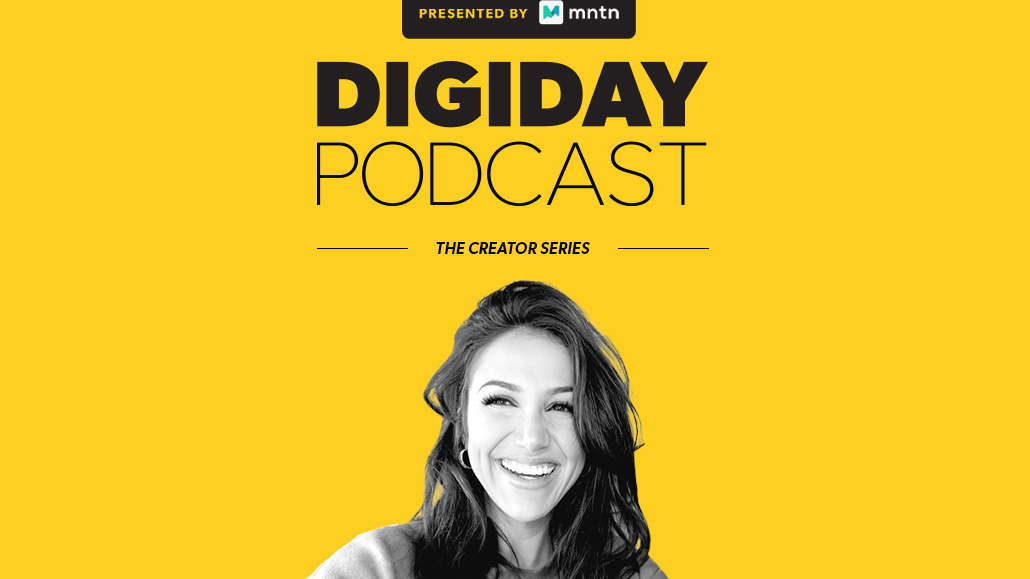Why creator Kat Stickler isn’t worried about a possible TikTok ban

This article is part of a special Digiday Podcast series that covers how content creators are building their brands and earning revenue from various major social media platforms. More from the series →
Subscribe: Apple Podcasts • Spotify
In the possible scenario in which TikTok gets banned in the United States, TikTokers like Kat Stickler will need to rely on other platforms to maintain their followings and their brand partnerships.
But Stickler, who has almost 10 million followers on TikTok, isn’t worried. That’s partially due to the fact that she already has over 1 million Instagram followers, 268,000 YouTube subscribers and 116,000 followers on Facebook. She’s also heartened by brands already shifting their influencer marketing dollars to other platforms for fear that the ads they buy on TikTok won’t be as evergreen as they once were.
On the latest episode of the Digiday Podcast, Stickler kicks off the third-annual Creator Series — a four-week-long span of episodes — that will look at the rise of short-form vertical video and how creators, like Stickler, have been able to grow sizable followings.
Below are highlights from the conversation, which have been lightly edited for clarity and length.
Being picky over brand deals, even with fewer happening on the platform
Because of this whole potential ban, brands have been backing up [from TikTok]. They don’t really want to invest in this [platform] if it’s not going to be evergreen content that’s going to be on this app continuing to gain views and people are gonna watch it. So it has made me take a step back and really realize that the only thing I have is my reputation. So it’s not harder for me to say no to brands now, even at this point when it’s more detrimental when things are coming to a halt. It’s stressful, it’s scary. Like, I have a daughter and I’m trying to buy a place, but it’s just kind of doing all the logistics in your mind and it’s realizing that if I say no, and keep my reputation that is more important [than saying yes to brand deals for products or brands that I don’t like].
There was one brand I remember [I did an ad for]. It was like an OK brand. It was a cheap product, and I think it was like $10. And I’m like, I would never use this. And for months, I felt so guilty for doing the ad for it. And I was like, never again. Never again will I ever do that and compromise my integrity for a paycheck. At the end of the day, that’s not going to get your business blossoming. It’s not going to get people to trust you. It’s not going to get you to the point where you can do your own product and you don’t have to be working for other people.
Not worried, even in the face of a possible ban
I know that if TikTok ended tomorrow, I would be OK. But I also think as a creator, whenever you’re doing something that’s backed by fear, it kind of adds a little bit more [aggression into how you approach posting on platforms]. I am realizing that I am working a lot on YouTube now and now I’m also going back to Facebook [and] I don’t remember the last time I used Facebook. So it’s me getting back in touch with this stuff, because it’s the smart thing to do.
I read the whole bill and I watched the whole hearing that they had, but it’s kind of hard to comprehend that they would [ban TikTok] but either way, it’ll all be OK. I don’t want to stress about it. But yes, not [having] all my eggs [in one TikTok basket]. [I] have to take a step back and distribute [my] energy.
Building audiences on new platforms by knowing what they want
My YouTube people see a totally different side of me. They see me in 10-20 minute spans talking about my emotions. Instagram sees a different side of me through Stories, like more time with my daughter, some pictures of this is what I did, this is what’s on my mind. And TikTok sees this very curated [version of me] — sometimes, because sometimes I go on there and I’m bawling my eyes out.
So I try to look at [my audience] as the same [across platforms], but I think people know where to go based — I don’t want to say what version of me they want — but you get different sides of me based on the platform. Not because I’m trying to be some type of way, but I just feel like on YouTube, I can talk more because I have 20 minutes now instead of 60 seconds to keep your attention. And on Instagram, I can be more chill and relaxed because it’s a day-to-day story or it’s a [photo]. It’s whatever they want from me.
More in Media

Digiday+ Research: Publishers’ growing focus on video doesn’t translate to social platforms
Major publishers have made recent investments in vertical video, but that shift is not carrying over to social media platforms.

Technology x humanity: A conversation with Dayforce’s Amy Capellanti-Wolf
Capellanti-Wolf shared insight on everything from navigating AI adoption and combating burnout to rethinking talent strategies.

How The Arena Group is rewriting its commercial playbook for the zero-click era
The company is testing AI-powered content recommendation models to keep readers moving through its network of sites and, in doing so, bump up revenue per session – its core performance metric.








